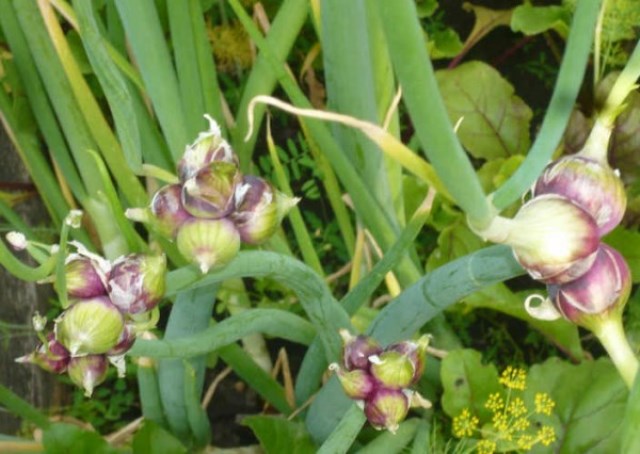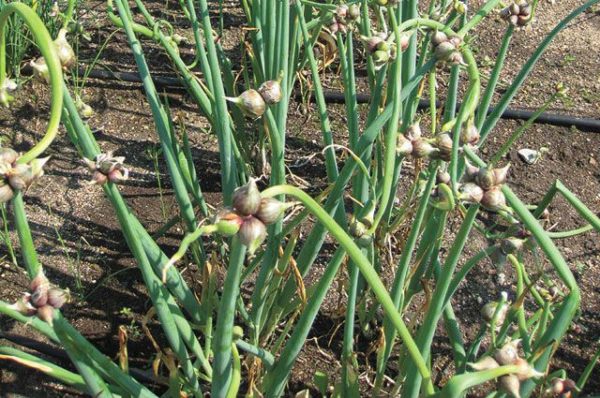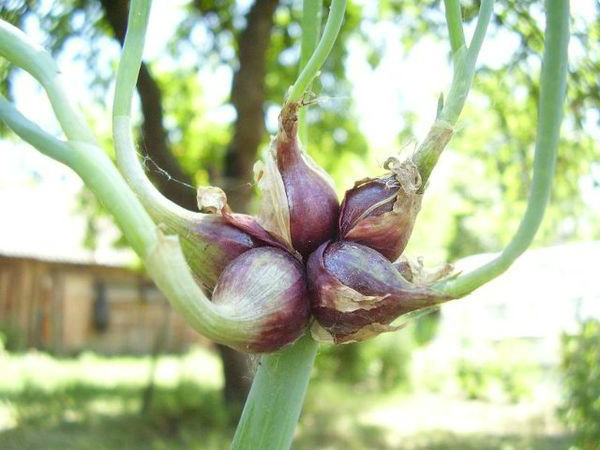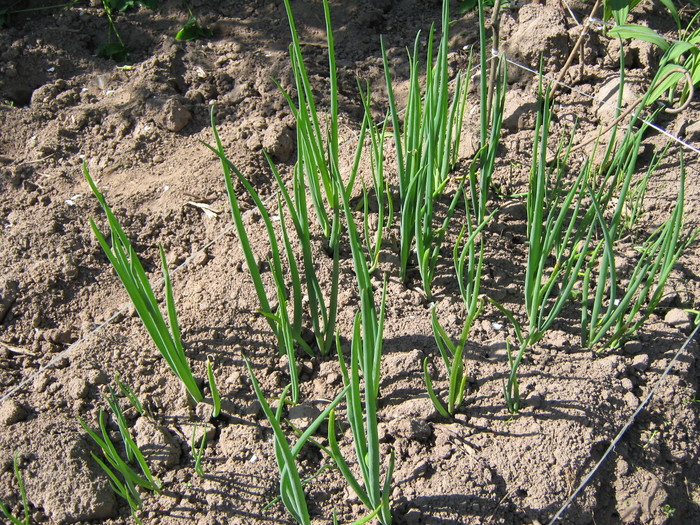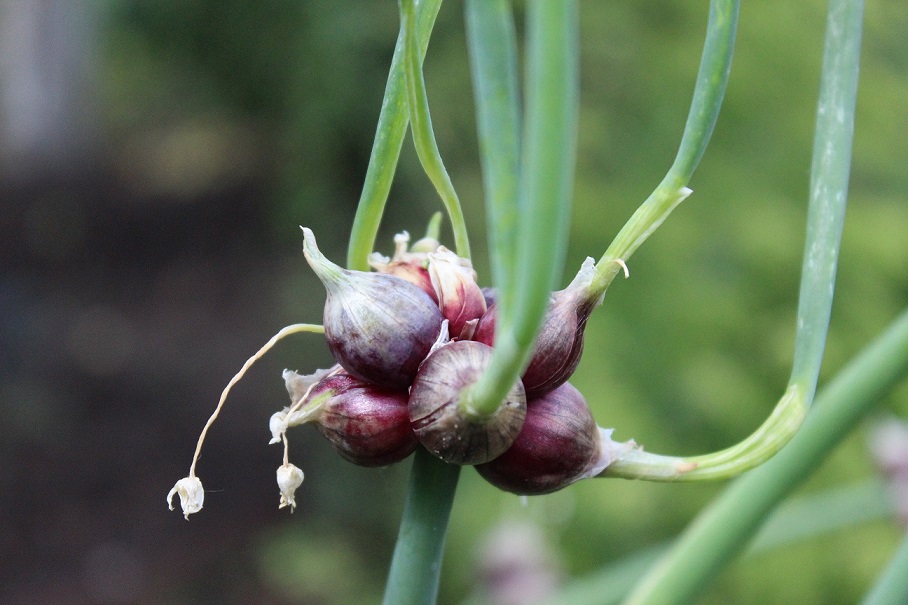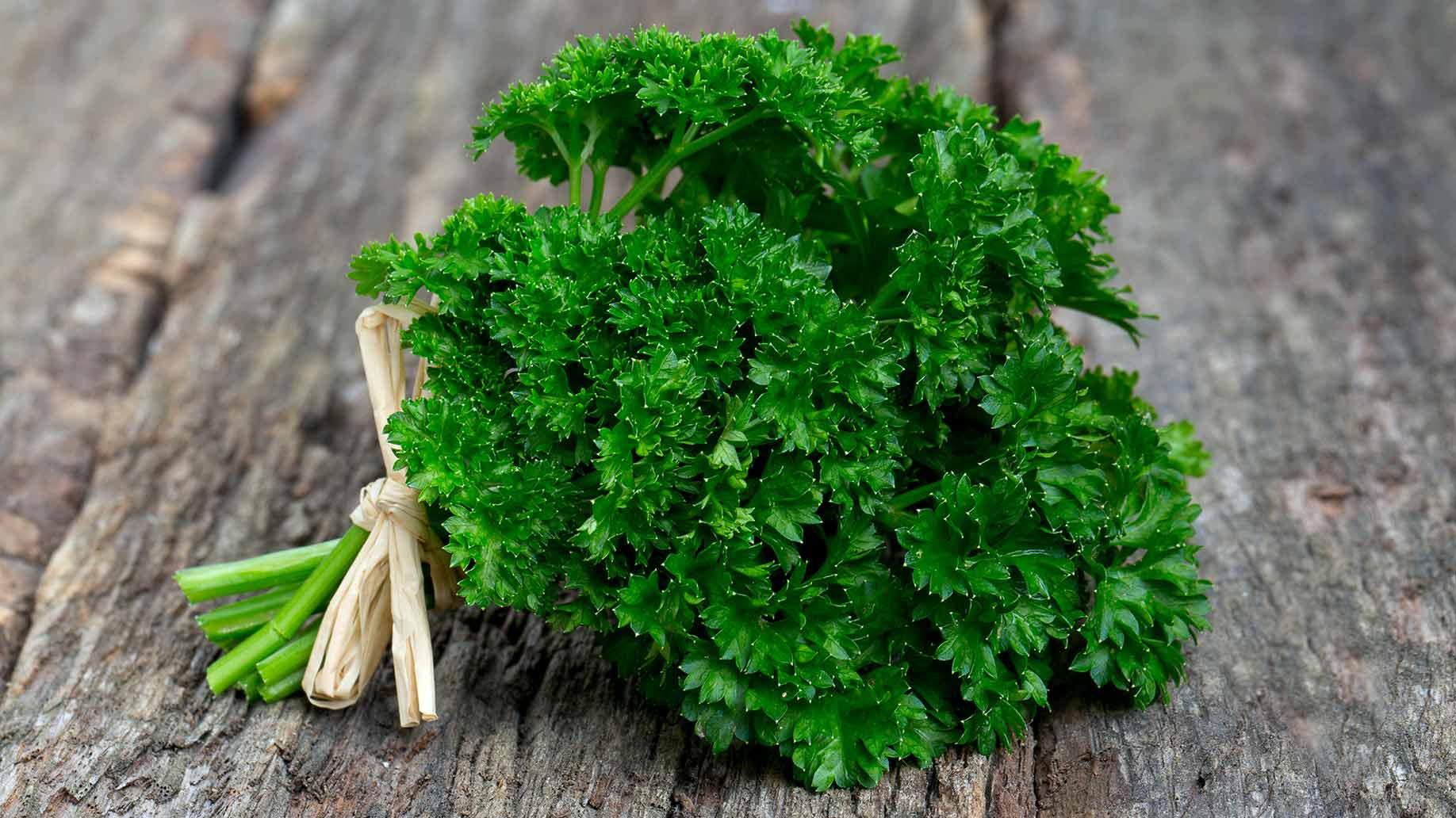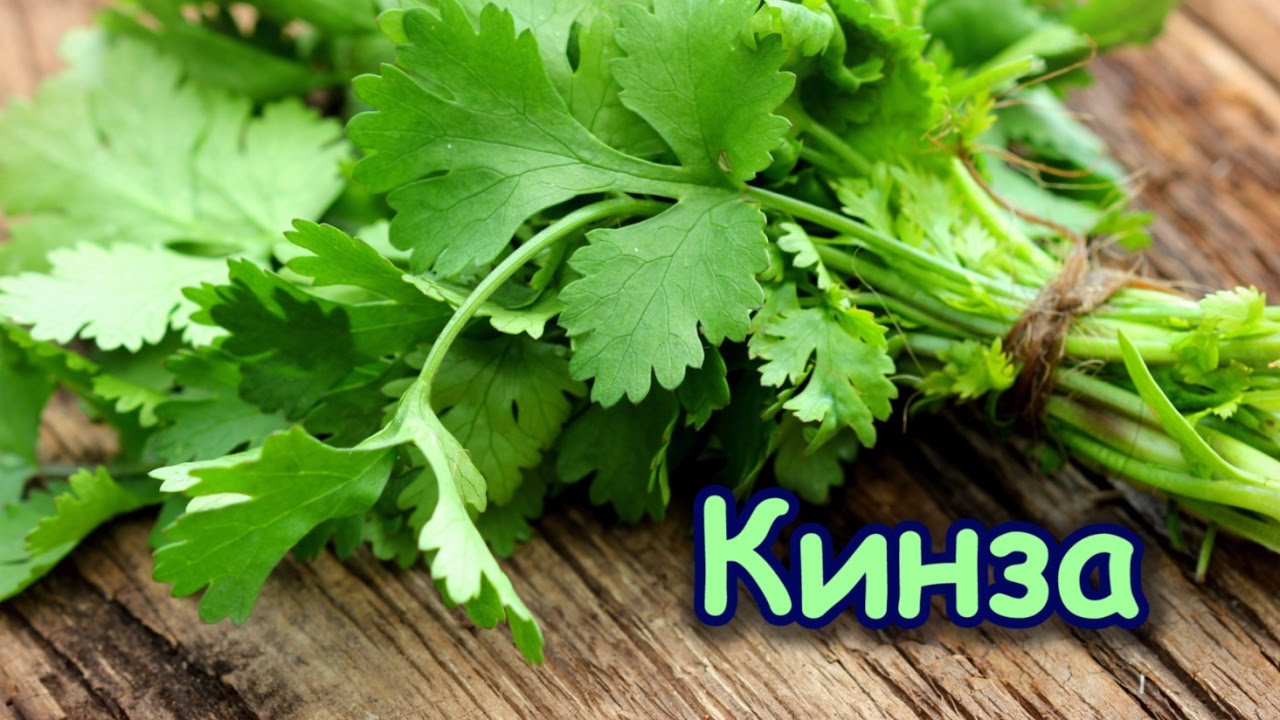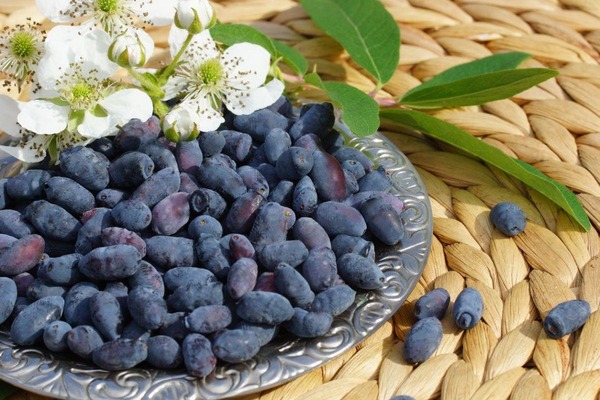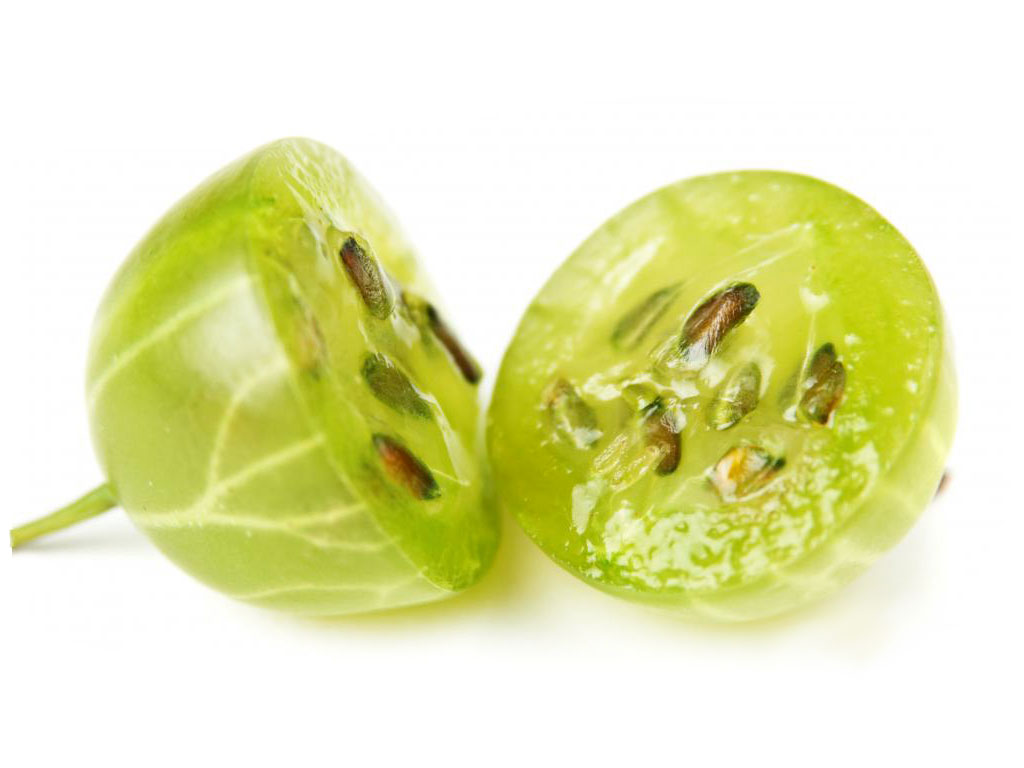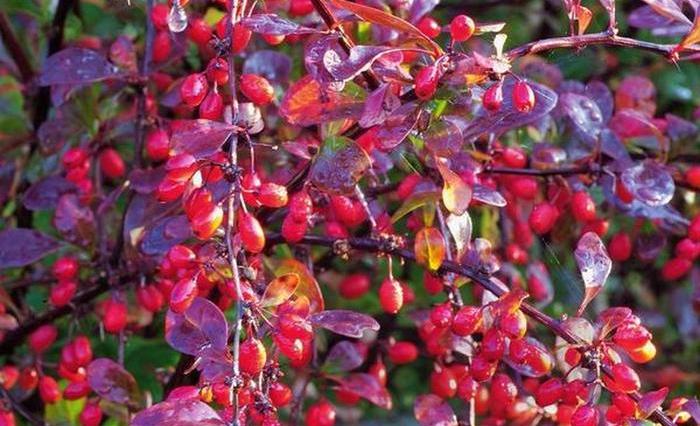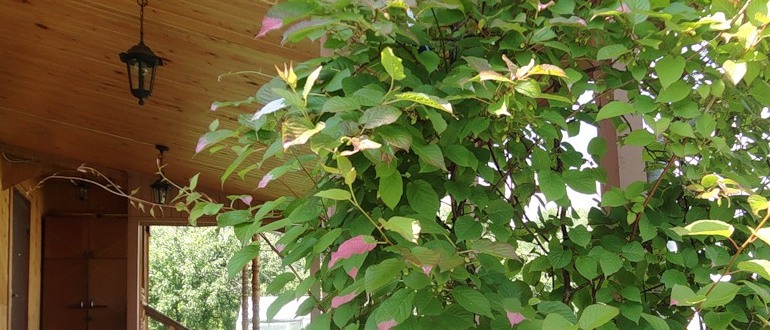Content:
Experienced gardeners never cease to be amazed at this amazing plant - longline onion.
The exotic appearance of the culture raises concerns about whether the plant will take root in the summer cottage. However, multi-tiered onions are distinguished by their unpretentiousness in care, frost resistance, resistance to diseases and pests. The decorativeness of the plant attracts the attention of many people, including vegetable growers.
Description
The multi-tiered onion (Latin Allium proliferum) belongs to herbaceous perennials from the Onion family. It is called in another way:
- Canadian or Egyptian bow;
- walking or horned bow;
- viviparous onion.
It is believed that the vegetable culture comes from the Middle East. Then she got to Egypt and other countries. However, it appeared in Russia relatively recently, at the end of the last century.
The three-tiered bow got its name from its appearance. On stalks-pedicels, which reach 65-80 cm in height, small air bulbs (bulbs), weighing 15-25 g, are placed in tiers. As a rule, there are 2 or 3 such tiers. Below are large bulbs, up to 3 cm in diameter, at the top - numerous small ones.
The bush grows for 2 years: the length of the juicy dark green leaves is from 40 to 50 cm, the width is about 2 cm. They are similar to turnip onions: tubular, hollow. All parts of Canadian onions are used in cooking, and onions are used mainly for canning and pickling vegetables. The taste of greens, which is used in salads, is sharper than that of onions.
Beneficial features
The people say for a reason that the bow is from seven ailments. The plant contains:
- vitamins C, PP, B1, B2;
- carotene;
- essential oils;
- Sahara;
- minerals: potassium and molybdenum, calcium and cobalt, phosphorus and nickel, zinc and boron, iron and copper, manganese and zinc.
It is widely used in alternative medicine for:
- strengthening immunity;
- prevention of gastrointestinal tract disorders;
- normalization of the work of blood vessels and heart;
- decrease in pressure;
- improvement of the skin;
- fight against worms;
- treatment of vitamin deficiency, colds, gum pathologies.
How is it grown
Gardeners note that when planting a multi-tiered onion and caring for it, the use of special secrets of agricultural technology is not required.
The complete absence of a dormant phase provides a two-story onion with fruiting during the entire growing season. It is grown both in the northern and southern latitudes of Russia, supplying consumers with vitamin greens for a long time.
Specific requirements are put forward by the three-tiered bow to the ground. The plant loves fertile and neutral soil. Organic introduction is recommended before planting. An open, well-lit site is chosen for planting. Compliance with this rule guarantees a high yield of up to 5 years in one place. For the appearance of super early green feathers in the spring, it is advised to plant a crop on a hill.
How to propagate a culture
Reproduction of two-story onions occurs only in a vegetative way. A plant does not have seeds. To propagate the culture, aerial bulbs are chosen from the first or second tier.In addition, you can breed a vegetable crop by dividing the bush. It is required to dig up the onion, divide the underground fruits and plant in another bed. The landing pattern of air and underground bulbs is similar.
Collecting bulbs before they release arrows is appreciated. Bulbs collected at the end of the summer season are suitable for planting. It is important to build up roots in the fall and prepare for wintering. The planting material will need to be thoroughly dried. Store in a paper bag in the refrigerator.
How to plant
For disembarkation bulbous plants as an annual soil are dug up and applied per 1 m2:
- ammonium nitrate (30 g);
- potassium salt (30 g);
- superphosphate (40 g).
The introduction of dressings for perennials is carried out in a complex manner: 5-7 kg of humus or manure per 1 m2. For walking onions, loam and sandy loam are preferable. On acidic soils and wetlands, poor crop growth and development are observed. It is desirable that the acidity level of the soil is 6.0-6.5.
The plant is grown both in open and protected ground.
Characteristic features of growing onions in the open field:
- Mid-August and the first half of September are suitable for planting. Before the onset of frost, it will have time to take root and overwinter successfully;
- In winter, the underground part of the bulb dies off. However, in this way, the culture tolerates wintering well. She is not afraid of frosts down to -45 ° С with insignificant snow cover. The main thing is the development of the root system of viviparous onions;
- You should beware of sudden temperature changes in spring. A sudden drop in temperature after a thaw will not respond well to the plant;
- The area with perennials must be cleaned at the beginning of the spring season from rotten leaves - a source of harmful microflora;
- After the snow melts, green feathers grow. The bow is shot in the second year. The shooting phase occurs at the end of May or early June. On the flowering arrows, in July-August, a pair of tiers of aerial bulbs are formed. The dimensions of the bulb depend on the height of the tier;
- Warm climate, moisture in the required amount are among the factors that cause the intensive development of horned onions;
- Eat before the appearance of the first aerial bulbs;
- Egyptian onions are planted on a feather, observing a 10-15 cm spacing between plants (20 cm - for perennials), the distance between rows is 30 cm. The seeding depth of the bulbs is 4 cm. In the greenhouse, the distance between the bulbs is 3 cm;
- For uterine cultures, leave between the rows from 50 to 70 cm;
- For planting in spring, the seed is stored frozen. They are planted in seedling boxes and greenhouses from January. This operation is possible at any time - there is no resting stage. For forcing on greens, underground bulbs are suitable.
Growing on a windowsill
In autumn, air bulbs are placed in containers or cassettes. The speed of germination guarantees the supply of greens. Planting Canadian onions at home will allow you to replenish the supply of vitamins from underground bulbs.
How to care for your culture
Caring for Canadian onions includes:
- watering in moderation;
- loosening the soil;
- weeding;
- removal of dry foliage.
The appearance of arrows warns of the need to secure the pegs and tighten the twine to support the plants.
Top dressing
In the spring, after snowmelt, they are fed with ammonium nitrate, coupled with potassium sulfate: 10 g per 1 m2. After trimming the leaves, mineral fertilizers are applied: manure (2 buckets) + potassium salt (1 tbsp. L.), Superphosphate (2 tbsp. L.).
On heavy soils, river sand is introduced. Top dressing and watering are combined.
Watering
Excess moisture threatens tender bulbs with decay. Watering the beds is carried out as the topsoil dries out. A large amount of root water will affect the bulb size, but will result in a loss of crunch and bitterness.
How to resist pests and diseases
To prevent peronosporosis, Canadian onions are treated with a Bordeaux mixture (1%). The procedure is repeated three times.
Loosening and weed control
The soil under the Egyptian onion needs to be loosened every week - air circulation is important for the roots. The rapid growth of a three-story onion in height says that the plant must be thinned out or divided into parts.
The crop reacts negatively to weeds. Timely weeding is required. Simplifies the care of onions by mulching grass. Sawdust, peat or spruce butcher will acidify the soil and thereby inhibit the growth of the culture. The success of wintering when planting in autumn is due to the good loosening of the soil and the destruction of onion fly egg-laying.
How to harvest
Harvesting falls in early August. The acquisition of a brownish-violet color by airborne bulbs means their ripening. Late collection leads to the rash of bulbs. The upper part dies off, the basal bulb begins to grow, with the arrival of spring it will release an arrow, share and become the beginning of a large bush. It is advisable to thin out three-year plantings. A plant grows in one place for a maximum of 5 years.
The feather is cut after 4 weeks, the second time after a month. Cutting is carried out 5 cm above ground level. The frequency of the procedure is 2 times per season.
Above ground bulbs, which are harvested in summer, are suitable for replanting. Some are suitable for landings in the country, the rest are stored until winter and, if desired, are planted in an apartment.
Variety of species
The variety of varieties is unusual for Canadian onions. Russian breeders have bred several species that are recommended for cultivation in all climatic zones.
Popular varieties among gardeners:
- Memory;
- Odessa winter;
- Gribovsky 38;
- Likova.
Whoever has seen a plant at least once, a picture of an exotic plant will stick in memory for a long time. Bunk onions are ideal crops for growing. Even an inexperienced gardener can plant and care for an unpretentious plant. In addition, it has useful properties and always pleases with the harvest. Plant a healthy plant in your area and enjoy the freshness of the taste.
